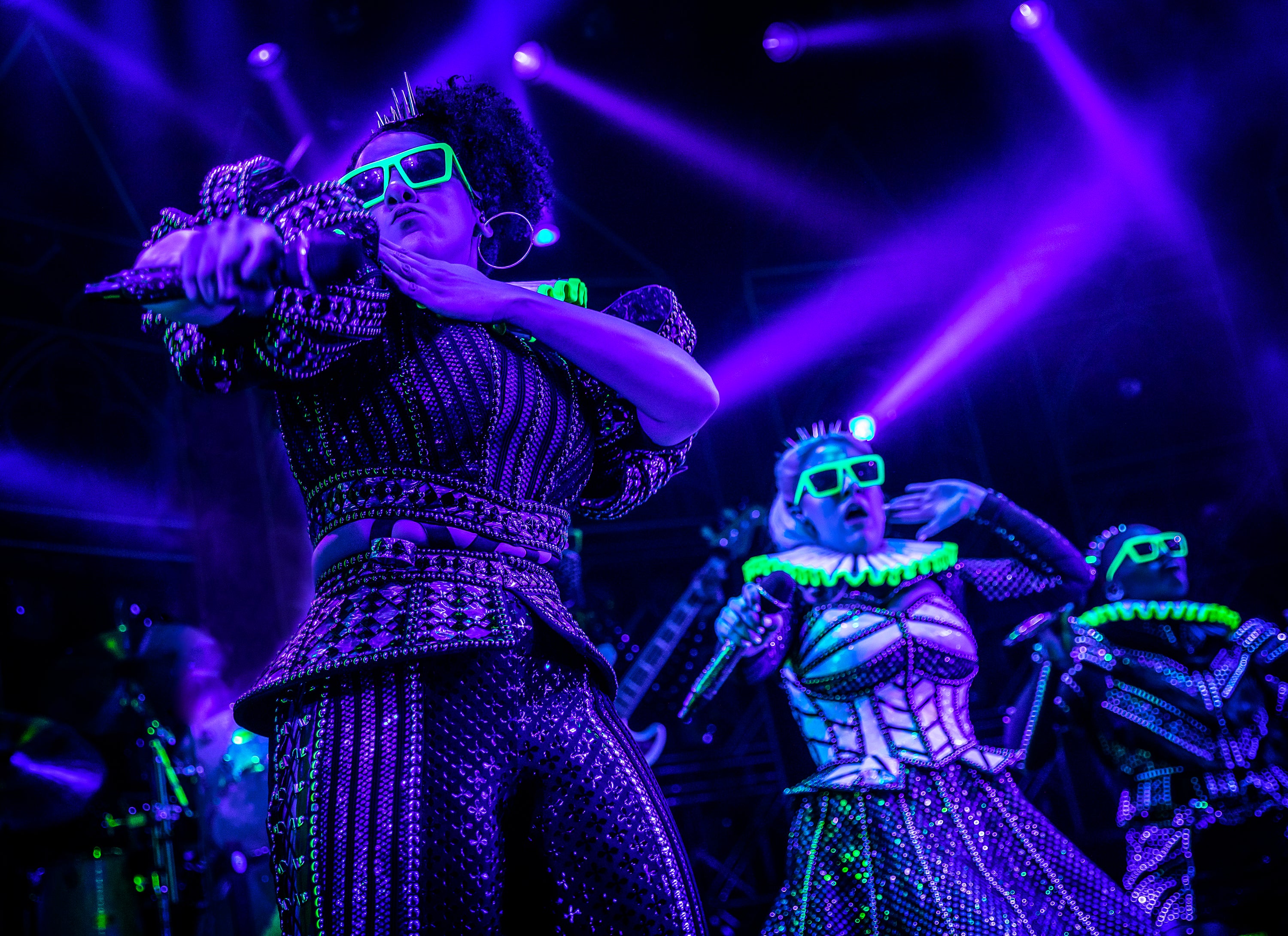Six the Musical review, Lyric Theatre: A lavish production with undeniable shallowness
As dazzling as the iconic show may be, it fails to fulfil its aim of portraying Henry VIII’s wives as individual women with beating hearts

There’s no stopping Six. It’s the kind of cultural phenomenon whose origin story (written by two Cambridge University students, premiering in 2017 at the Edinburgh Fringe, and now the second most streamed musical theatre album in the world) is almost as ubiquitous as the show itself.
It is a juggernaut, touring numerous countries and opening on Broadway just as Covid hit in March. Now, temporarily relocated to the Lyric Theatre, it reopens after multiple lockdown-related reschedulings, sashaying into the larger space with apparent ease.
The premise is simple: Henry VIII’s six wives have gathered to decide who had the worst time at the hands of the big man. A sing-off ensues with each queen making her case in the style of various pop icons – Catherine of Aragon emulates Shakira, Anne Boleyn mimics Lily Allen’s staccato rhythms, and so on.
Co-directors Lucy Moss and Jamie Armitage’s production is truly lavish: Tim Deiling’s juicy pink and purple lights swirl about the stage, bouncing off Gabriella Slade’s rhinestone-encrusted costumes as the queens shimmy through Carrie-Ann Ingrouille’s well-oiled choreography.
It’s slick, glittering entertainment, anchored by some genuinely virtuosic performances – Jarnéia Richard-Noel coolly jaded as Catherine of Aragon, Sophie Isaacs bratty and brazen as Katherine Howard, and understudy Hana Stewart (covering for Danielle Steers as Catherine Parr) threatening to blow the roof off the building with swooping, elastic vocals. Moss and Toby Marlow’s songs are weapons-grade dynamite, the type of catchy that wriggles its way into your brain, even if references to “epic fails” and Henry “swiping right” on Anne of Cleves feel like unwelcome fallout from the early 2010s.
But twee cultural references aren’t the only things that feel a little tired. While Six is not exactly positioning itself as a bastion of modern feminism, it does lean into an increasingly overdone “empowered women” schtick which runs its course fairly quickly. There is an undeniable shallowness that is difficult to shake off – if anything, the high sheen and glossy production values emphasise how slight (if well-intentioned) the show’s politics are.
The aim of Six is to dig into these women, to find out who they really were and what they could have been. At the very start, they are positioned as emblematic, defined only by their descriptor in the glib “divorced, beheaded, died” rhyme. And yet, by the end, we are no closer to knowing anything about any of them – each one seems consigned to a particular joke or trait repeated throughout, a kind of shorthand which belies the very intent of the show (Anne Boleyn quipping about getting beheaded, for example).
Six is ostensibly trying to move away from the general public’s cultural understanding of these figures, positioning them instead as young women with beating hearts, who have real, valid wants and desires. And yet, by the show’s close, they have once again been calcified into symbols, only this time a little more bedazzled, a little less fusty, a tad more girlboss. Iconic? Yes, absolutely. Just in more ways than one.



Join our commenting forum
Join thought-provoking conversations, follow other Independent readers and see their replies
Comments